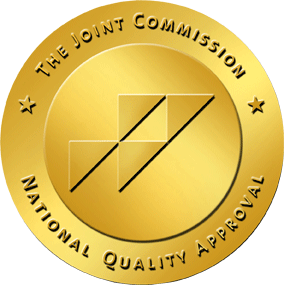Eating is a complicated part of life. It’s affected by all sorts of things like our genes, upbringing, mental health, media imagery, biological changes, and even injuries. This is why we see so many different types of eating disorders!
This article will explore the definition, causes, and all the different types of eating disorders, their signs and symptoms, and how to seek help for those struggling with an eating disorder.
Introduction to Eating Disorders
Eating disorders arise when someone’s preoccupation with food, body shape, or weight causes significant distress. These preoccupations can lead to physical and psychological issues, such as erratic behavior around food and severe nutritional deficiencies.
What Are Eating Disorders?

Eating disorders are complex mental illnesses characterized by extreme disturbances to a person’s eating habits, thoughts, and feelings surrounding food, body image, and weight. This can affect anyone of any gender, age, or cultural background, though they usually first appear during adolescence or young adulthood.
People with eating disorders can lead happy and fulfilling lives with adequate treatment. If you think you may be suffering from an eating disorder, it is important to seek help immediately.
The Importance of Understanding Different Types
Each eating disorder has unique risk factors, consequences, and treatments. It can cause mental health symptoms such as depression or anxiety and physical health problems such as decreased bone density, heart failure, and potential death.
Currently, 8 types of eating disorders are recognized as medical diagnoses in the ICD and DSM-5-TR (these are two official manuals medical doctors and psychologists use to track valid diagnoses). The most common types of eating disorders include anorexia nervosa, bulimia nervosa, binge eating disorder, and pica. However, there are also some “unofficial” types of eating disorders that mental health scientists recognize.
What Are the Causes of an Eating Disorder?
The exact cause of an eating disorder is unknown, but several factors can contribute to its development:
- Biological: Genetics and hormonal imbalances, like with leptin and serotonin.
- Psychological: Traits like low self-esteem, perfectionism, and underlying mental health issues.
- Social/Cultural: Unrealistic body ideals and the valorization of thinness.
- Trauma: Childhood or adult trauma, including abuse.
- Modeled Behaviors: Disordered eating patterns seen in family or friends.
- Stressful Events: Incidents like bullying, divorce, or loss of a loved one.
- Medical Conditions: Health issues contributing to malnutrition or unhealthy eating habits.
Global Statistics on Eating Disorders
According to the National Eating Disorders Association (NEDA), about 20 million women and 10 million men in the United States alone experience a clinically significant eating disorder at some point. Globally, the prevalence rates of eating disorders have been rising, with studies suggesting that up to 13% of youth may experience an eating disorder by age 20. Scarily, 1 person dies every 52 minutes as a direct result of an eating disorder.
Factors Contributing to Rising Cases
Recent studies suggest a significant increase in eating disorder cases worldwide over the past decade. Contributing factors for the increase in eating disorders include:
- Social Media and Body Image: Social media platforms can heighten body image issues, promoting unrealistic beauty standards.
- Cultural Factors: Certain cultures emphasize thinness, creating pressure to conform to specific body shapes.
- Mental Health Issues: Depression, anxiety, and other mental health disorders are often comorbid with eating disorders.
- Genetic Predisposition: A family history of eating disorders can increase an individual’s risk of developing one.
If you think someone may be confronting an eating disorder, it is important to seek professional help. Let’s take a closer look at the primary types of eating disorders as identified by medical and mental health experts.
Anorexia Nervosa: The Restrictive Eating Disorder

Specialists consider anorexia nervosa, or just anorexia, to be the most deadly of all mental illnesses because it has the highest mortality rate. For this reason, we can consider it the most severe of all eating disorders. This condition involves severe food restriction and sometimes extreme exercising and other purging behaviors.
Symptoms and Warning Signs
An individual with anorexia will typically show these signs and symptoms:
- Intense fear of gaining weight; even a small amount is intolerable
- Losing weight rapidly and consistently staying underweight; their skinny appearance can be alarming for friends and family
- Refusal to acknowledge that such a low body weight can have harmful health consequences
Health Implications and Risks
Anorexia can have severe health implications due to chronic undernourishment and extreme weight loss.
- Amenorrhea: In biological women, anorexia can result in the loss of menstrual cycles due to low body fat, affecting reproductive health.
- Cardiovascular Damage: Anorexia stresses the cardiovascular system and can cause heart irregularities, low blood pressure, and heart failure.
- Bone Density Loss: It can lead to osteoporosis and an increased risk of fractures due to decreased bone mass and hormonal changes.
- Gastrointestinal Issues: Reduced food intake and malnutrition can cause bloating, constipation, and delayed stomach emptying.
Bulimia Nervosa: The Binge-Purge Cycle
Bulimia nervosa or bulimia occurs when someone is repeatedly binging on large amounts of food and then purging it. Purging behaviors include forcing oneself to throw up, over-exercising, and using diet pills and laxatives.
Both binging and purging behaviors are dangerous, and together they can quickly lead to dangerous physical symptoms. Common signs include:
- Binge eating, or large food consumption in short periods
- Compensatory behaviors like vomiting, laxative use, or excessive exercise
- Guilt or shame after overeating
- Distorted body image
- Social withdrawal
- Dental issues due to stomach acid from vomiting
- Depression or anxiety
Differentiating Features from Anorexia
Bulimia involves episodes of binge eating followed by compensatory behaviors like vomiting or excessive exercise, whereas anorexia is marked by severe food restriction and significant weight loss. People with bulimia are more likely to have a normal or slightly above-average weight.
Psychological and Physical Effects
Bulimia can cause emotional pain, guilt, and anxiety due to the binge and purge cycle. Physically, it may cause dental erosion, electrolyte imbalances, and gastrointestinal issues from frequent vomiting and other compensatory behaviors.
Binge Eating Disorder (BED): Compulsive Overeating

Binge Eating Disorder (BED) is characterized by episodes of binging on large amounts of food. A binge is described as when someone consumes an excessive amount of food within two hours. Binges are accompanied by a trance-like state, feeling guilty and ashamed afterward, and weight gain.
Behavioral Patterns and Triggers
Unlike bulimia, BED does not usually include any purging behaviors. Typically, those affected by BED are overweight or obese because of the binging. Common signs and symptoms of binge eating disorder may include:
- Feeling out of control while eating
- Eating even when full or not hungry
- Embarrassment, shame, or guilt about eating habits
- Having a distorted body image
- Avoiding social situations because of binging behavior
- Significant weight gain
Long-Term Health Consequences
BED causes many health complications and poses a great risk to your long-term health. The weight gained puts individuals at a much higher risk of developing obesity. They are also likely to experience depression or anxiety, specifically tied to their eating habits and the loss of control and shame felt over binging. Individuals with BED are also at risk of developing cardiovascular disease and type 2 diabetes.
Avoidant/Restrictive Food Intake Disorder (ARFID)
Avoidant Restrictive Food Intake Disorder (ARFID) is an eating disorder characterized by severe restriction and avoidance of certain foods or entire food groups. It is much more common than previously thought, especially in young children.
ARFID can range from mild to severe, with some individuals only eating a minimal variety of food due to fear of choking, texture issues, unknown ingredients, or other psychological reasons. This can lead to serious nutritional deficiencies, weight loss, and impaired growth.
Understanding ARFID in Children and Adults
In young children, ARFID may manifest as extreme pickiness or refusal to eat certain foods, and the associated nutritional deficiencies and growth concerns can be severe. ARFID can persist into adulthood, or even emerge later in life, and differs from general pickiness in that it impacts your daily functioning significantly.
Symptoms and Diagnosis Criteria
To meet the ARFID diagnosis criteria, the individual would consistently fail to meet nutritional needs, resulting in weight loss, nutritional deficiency, or interference with daily life. Common signs and symptoms of ARFID include:
- Refusal or reluctance to try new foods, often due to sensory issues
- Fear of choking, gagging, or vomiting when eating certain foods
- Avoidance of entire food groups, like meat or vegetables
- Limited variety of foods in the diet, leading to weight loss or poor growth in children
- Social avoidance due to anxiety or fear of eating in public
Pica: Unusual Cravings for Non-Nutritive Substances

Pica is when a person craves and consumes non-food items such as dirt, clay, chalk, paper, laundry starch, ice chips, or even hair. This disorder is marked by the continued consumption of these non-nutritive substances for at least one month.
Pica can occur in adults and children and is more common in those with developmental disabilities. Generally, people who suffer from pica are malnourished and at risk for other health complications due to the lack of proper nutrition. Common signs and symptoms of pica may include:
- Constant craving or consumption of non-food items such as dirt, clay, or paper
- Stomach pain, nausea, or constipation after ingesting non-food substances
- Oral damage or poor dental hygiene from eating hard or abrasive objects
- Weight changes due to inconsistent food intake
- Anxiety or depression related to an inability to stop consuming non-food substances
Causes and Risk Factors
Though there is no single cause of pica, in some cases, low levels of nutrients like zinc or iron might trigger certain cravings. Stress can also be a risk factor. Pica is often seen in children who have been abused, neglected, or who live in extreme poverty.
Rumination Disorder: Repeated Regurgitation
Rumination disorder is an eating disorder in which a person brings up previously swallowed food and chews it repeatedly, regurgitating and re-chewing the partially digested food before swallowing it again, a process that can continue for several minutes.
This condition is more common in very young children, such as infants or those of early school age, but may persist until adulthood. Individuals with rumination disorder are often unaware of their behaviors or don’t report feelings of distress when engaging in them.
Behavioral Patterns and Complications
While this disorder isn’t life-threatening on its own, debilitating complications can develop. This could range from a heightened GI sensitivity, resulting in abdominal pain, to bloating and/or pressure that makes having any food or fluid in the stomach intolerable. Common signs and symptoms of rumination disorder include:
- Repeatedly regurgitating and re-chewing partially digested food
- Difficulty swallowing, coughing, or gagging while eating
- Abdominal pain or cramps after meals
- Frequent belching and hiccuping following meals
- Weight loss or nutritional deficiencies due to reduced food intake and digestion
Other Specified Feeding or Eating Disorders (OSFED)

Other Specified Feeding and Eating Disorder (OSFED) is an eating disorder classification for those who do not meet the diagnostic criteria for any other type of eating disorder. People with OSFED may display signs of one or more of the official disorders covered above, but these may not be severe enough to meet the full criteria for diagnosis.
Diagnostic Challenges
OSFED is designed to cover a wide range of symptoms that don’t fit into the regular disordered eating categories. This broad scope can make it challenging to accurately diagnose and treat specific eating disorders under the OSFED umbrella.
Subtypes and Variations
The OSFED category includes many subtypes of eating disorders, which may not be specifically outlined in the DSM-5 but are used by medical professionals to describe less common forms of disordered eating. Here are some examples of OSFED variations:
- Atypical Anorexia Nervosa: Similar to anorexia nervosa, this disorder does not involve the same level of weight loss. Individuals with atypical anorexia nervosa may be of average or higher weight.
- Binge Eating Disorder (of low frequency or limited duration): A form of BED that involves episodes of binge eating but at a lower frequency or shorter duration than the typical binge eating disorder.
- Bulimia Nervosa (of low frequency or limited duration): This is a form of bulimia that involves episodes of binge eating, followed by compensatory behaviors, at a lower frequency or shorter duration than typical.
- Purging Disorder: A form of disordered eating in which individuals follow regular eating habits with self-induced vomiting, laxative misuse, diuretic abuse, or other forms of purging. It’s similar to bulimia but without the binging aspect.
More examples of OSFED are explored in greater detail below.
Night Eating Syndrome (NES)
Night Eating Syndrome (NES) is an eating disorder characterized by excessive food intake late at night. Individuals with NES often wake up during the night and consume a large amount of food, sometimes even consuming more calories than they do during the day.
Link to Sleep Disorders and Depression
People with NES tend to have disrupted sleep patterns and find it difficult to fall asleep or stay asleep without eating. This behavior can lead to dangerous health consequences such as obesity, metabolic syndrome, depression, and anxiety.
Orthorexia: Obsessive Pursuit of Healthy Eating

We are all under pressure to eat healthier for various reasons. In the case of orthorexia nervosa, or just orthorexia, someone becomes so fixated on planning a perfect diet that it disrupts their life.
Relationship with Eating Disorders
Orthorexia is more than just wanting to be healthy – it’s an obsession with eating only “healthy” foods, leading to restrictive diets and disordered eating patterns. Although not formally recognized as an eating disorder, the strict food rules and health-focused preoccupation can overlap with behaviors seen in other eating disorders.
Psychological Underpinnings
Orthorexia can stem from a desire for control, perfectionism, or feelings of moral superiority around food choices. The focus on “clean” eating can lead to anxiety, guilt, or self-punishment if dietary rules are broken, contributing to disordered eating behaviors.
Diabulimia: Diabetes and Eating Disorders
Diabulimia is when someone with type 1 diabetes uses their prescription insulin to try to control or lose weight. While it’s not officially recognized as a distinct eating disorder in the DSM-5, it involves disordered eating behaviors and poses significant health risks.
Unique Challenges of Diabulimia
Diabulimia involves manipulating insulin doses to induce weight loss. This harmful behavior poses unique medical risks and challenges, as treatment would need to address both diabetes management and eating disorder behaviors.
Health Risks and Treatment Approaches
People with diabulimia might skip or reduce insulin doses to prevent glucose from being stored as fat, leading to high blood sugar levels and rapid weight loss. This practice can lead to severe health complications, including:
- Diabetic Ketoacidosis: A life-threatening condition caused by extremely high blood sugar.
- Long-Term Complications: Chronic high blood sugar can lead to damage to the eyes, kidneys, nerves, and cardiovascular system.
Diabulimia has many characteristics of an eating disorder, including body image concerns and a focus on weight loss. However, it also involves aspects of diabetes management, making it a complex condition to treat. Treatment often requires a multidisciplinary approach, combining medical, psychological, and dietary expertise to address both diabetes management and disordered eating behaviors.
Muscle Dysmorphia (Bigorexia)
Muscle dysmorphia or “bigorexia” is a subtype of Body Dysmorphic Disorder (BDD), also called body dysmorphia. It’s more prevalent among men and is when someone obsesses over their muscle size, believing they are too small or underdeveloped.
Muscle dysmorphia can lead to excessive weightlifting, overtraining, and potentially unsafe supplement or steroid use. While it’s not specifically an eating disorder, it can lead to disordered eating behaviors, such as following extreme diets to build muscle or lose fat.
Intersection with Body Dysmorphic Disorder (BDD)

BDD is a mental health disorder where people obsess over perceived flaws in their appearance. It often leads to compulsive behaviors to change or “correct” flaws that aren’t visible to others. Muscle dysmorphia and body dysmorphia aren’t usually classified as eating disorders, but they share similarities in terms of body image concerns and can co-occur with eating disorders.
Unspecified Feeding or Eating Disorder (UFED)
Unspecified Feeding or Eating Disorder (UFED) is a category of eating disorders that includes individuals with disordered eating behaviors who do not fit into the criteria for any other specific disorder. Symptoms can include a distorted body image, excessive dieting or exercise, extreme worry over food intake and weight, and feelings of guilt after eating.
Individuals with UFED may have symptoms that are similar to those of anorexia, bulimia, or binge-eating disorder, but without fully meeting the diagnostic criteria for any one disorder.
“Unofficial” Eating Disorder Diagnoses
While not officially included in any diagnostic manual, healthcare providers use some of the below terms to describe specific, atypical eating behaviors. These conditions are often categorized under OSFED as the official diagnosis, with these terms helping to facilitate clearer communication about the patient’s condition.
- Compulsive Overeating (COE): COE involves continuous excessive eating throughout the day, distinguishing it from binge eating disorder which occurs in discrete episodes.
- Prader-Willi Syndrome: Prader-Willi Syndrome is a genetic disorder marked by weak muscles and poor feeding early in life, evolving into uncontrollable hunger and often leading to obesity and diabetes in childhood.
- Drunkorexia: Drunkorexia is a combination of restrictive food intake and purging with alcohol abuse, using calorie restriction to compensate for alcohol consumption, and risking severe malnutrition.
- Pregorexia: Pregorexia involves extreme prenatal weight control measures that threaten the health of both mother and child, potentially leading to serious complications like low birth weight and increased cardiovascular risk.
Gender Differences in Eating Disorders
While eating disorders impact people of all genders, there are differences in how they present and are perceived. In masculine-presenting people, there’s a significant focus on muscles and athletic performance. Feminine-presenting people tend to struggle more with an obsession with weight loss or thinness.
Androgynous individuals, who don’t fit into traditional gender roles, might face unique challenges and biases when it comes to eating disorders. They may feel pressure to conform to specific body ideals that are a blend of male and female characteristics.
How Eating Disorders Manifest in Males vs. Females

In males, eating disorders might manifest as excessive exercise or muscle-building behaviors like muscle dysmorphia. In females, eating disorders often involve food restriction and concerns about being slender, though people of all genders can show a wide range of disordered eating patterns.
Challenges in Diagnosis and Treatment
Eating disorders in males are often underdiagnosed due to stereotypes and stigma, leading to delayed treatment. Females may face unique social pressures regarding body image and thinness, which can influence diagnosis and treatment approaches.
The Impact of Media and Culture on Eating Disorders
Media and culture play significant roles in shaping societal norms about body image. Social media in particular is known for promoting unrealistic beauty standards. This pressure can contribute to disordered eating patterns and reinforce harmful behaviors. Advertising often glamorizes certain body types, further exacerbating the development of eating disorders.
Addressing Stigma and Misconceptions
It’s important to raise awareness and challenge stereotypes so we can address the stigma around eating disorders. By openly discussing honest information around EDs and real bodies, and encouraging vulnerability, misconceptions about eating disorders can be reduced. Supporting people’s mental health can also help combat stigma and promote a better understanding of these disorders.
Psychological and Emotional Factors
Psychological and emotional factors play a crucial role in the development and maintenance of eating disorders. Issues like low self-esteem, perfectionism, and unresolved trauma can significantly contribute to disordered eating behaviors. Addressing these problems too is essential for effective treatment and long-term recovery.
Role of Anxiety, Depression, and Trauma
Anxiety, depression, and trauma are common psychological underpinnings of eating disorders. They can worsen disordered eating patterns and complicate treatment. Understanding the relationship between these conditions and eating disorders is crucial in providing proper care and support.
Treatment Strategies Incorporating Therapy
Effective treatment strategies for eating disorders often incorporate various forms of therapy. This could include cognitive-behavioral therapy (CBT) or dialectical behavior therapy (DBT). Talk therapy helps people address distorted thoughts, manage emotions, and develop healthier coping mechanisms. Integrating therapy into ED treatment plans can lead to better outcomes and promote sustained recovery.
Medical Interventions and Treatment Options
It can be difficult to find the right type of treatment for eating disorders. The eating disorder treatment program must have a full staff dedicated to eating disorder treatment that would include a medical doctor, eating disorder therapists, eating disorder registered dietitians, and support staff that understands and supports the eating disorder program and, most importantly, the client.
Each type of treatment for eating disorders requires the program to consider what the client is struggling with in their relationship with food, weight, and body image, in addition to the potential medical consequences that can accompany the specific type of eating disorder. This way the entire team can support each client’s recovery with optimum care.
Multidisciplinary Approaches to Eating Disorder Recovery

Breathe Life Healing Centers take a comprehensive approach to eating disorder treatment, recognizing that every individual has unique clinical, emotional, and medical needs. Their program is staffed with a multidisciplinary team that includes registered dietitians, therapists, and supportive staff, all working together to support clients through recovery.
Pharmacological treatments, if required, are prescribed by medical professionals experienced in eating disorders, addressing associated symptoms or conditions like anxiety and depression. Nutritional therapy plays a significant role, with registered dietitians creating tailored meal plans to restore a healthy relationship with food.
Recovery and Relapse Prevention
Recovery from eating disorders is a long journey. It involves overcoming your distorted perceptions, rebuilding a healthy relationship with food, and addressing any underlying psychological issues. It’s important to maintain a strong support system to prevent relapse. Developing effective coping mechanisms to navigate potential triggers and stressors is also crucial in recovery.
Stages of Recovery from Eating Disorders
Recovery from eating disorders often involves several stages, from acknowledging the problem to actively working on behavioral changes and sustaining a healthy lifestyle. Each stage requires tailored support to address specific challenges, such as body image issues, food-related anxieties, or emotional triggers.
Preventative Measures and Support Systems
Preventative measures for eating disorders emphasize education, awareness, and fostering a positive body image. Strong support systems, including family, friends, and counselors, are important in preventing relapse and offering continuous encouragement throughout the recovery journey.
Summary: Understanding the Complexity of Eating Disorders
Eating disorders are complex mental health conditions with varying causes, presentations, and health implications. There’s no “one size fits all” approach when it comes to treatment, and each ED has to be handled uniquely.
A comprehensive understanding of these disorders, along with early intervention and a multidisciplinary approach to treatment, can significantly improve outcomes and promote sustained recovery. A licensed mental health professional, such as a psychologist or psychiatrist, will be able to diagnose and provide treatment for eating disorders.
The Importance of Early Intervention and Awareness

Eating disorders can be life-threatening, so it’s essential to recognize the signs and symptoms of an eating disorder early. If you or someone close to you is struggling with an eating disorder, reach out for help as soon as possible. The earlier an intervention can take place, the better the chances of successful treatment.
The world-renowned Eating Disorder Treatment at Breathe Life Healing Centers in Los Angeles involves an individualized plan that includes therapy, nutrition counseling, medication management, and holistic activities such as yoga and mindfulness. With an effective treatment plan, an individual can achieve lasting recovery. If you or someone close to you is struggling with an eating disorder, please reach out for help today.
FAQs on Eating Disorders
What are the most common signs of an eating disorder?
While the signs of eating disorders vary depending on the type, there are some common symptoms to look out for if you suspect someone may be struggling with an eating disorder. These include significant changes in eating habits, extreme concern with body weight or shape, and excessive exercise. Other signs are binge eating, compensatory behaviors like vomiting or laxative use, and withdrawal from social situations involving food.
How are eating disorders diagnosed?
Eating disorders are diagnosed through a thorough evaluation by healthcare professionals, often including a psychiatrist, psychologist, or primary care doctor. They assess eating patterns, body image concerns, and any related medical or psychological conditions, using criteria from the DSM-5.
What are effective treatment approaches for eating disorders?
Effective treatment for EDs typically involves a multidisciplinary team, including medical professionals, therapists, and dietitians. Treatment can include cognitive-behavioral therapy (CBT), nutritional counseling, medication management, and holistic activities. These help to address underlying psychological issues and rebuild a healthy relationship with food.
Can eating disorders be prevented?
While complete prevention may not always be possible, there are ways we can reduce the risk of developing eating disorders. Promoting a positive body image, reducing societal pressures around body weight, and encouraging healthy eating habits can help. Early education and awareness about eating disorders are also crucial in preventing disordered eating patterns.













